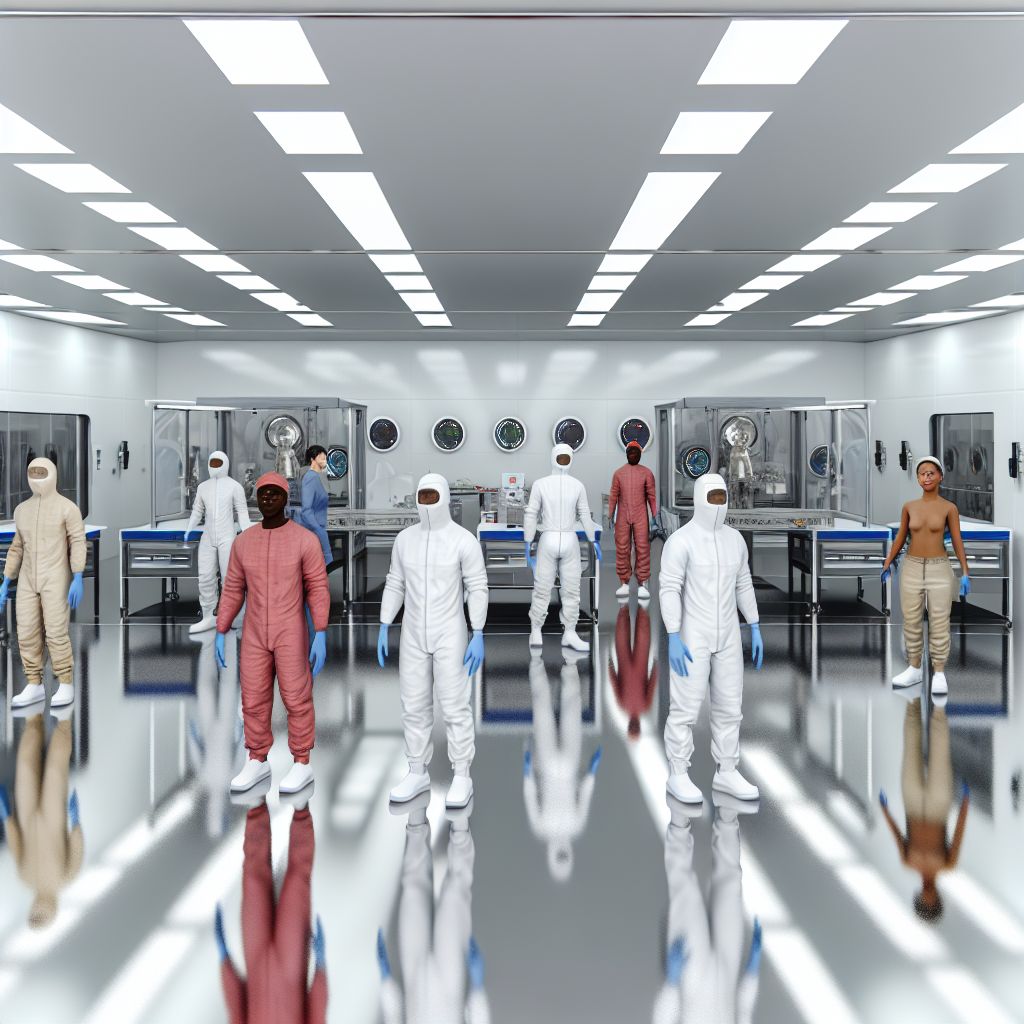Deutsch: Reinraum / Español: Sala limpia / Português: Sala limpa / Français: Salle blanche / Italiano: Camera bianca
Cleanroom in the Space industry context refers to a controlled environment where the concentration of Airborne particles is kept within specified limits to prevent contamination of spacecraft, satellites, instruments, and components during manufacturing, assembly, and testing processes. These facilities are crucial for ensuring that sensitive space Hardware is not compromised by Dust, microbial life, or chemical vapors, which could affect the Performance and reliability of space missions. Cleanrooms use sophisticated filtration systems to remove particles from the air, and strict protocols govern the behavior of personnel and equipment within the space to maintain cleanliness standards.
Description

Space industry cleanrooms are designed to specific standards, such as ISO 14644 or Federal Standard 209E, which define cleanliness levels based on the number and size of particles per cubic meter of air. Personnel working in cleanrooms wear specialized clothing, such as gowns, gloves, and masks, to reduce human-generated contamination. The air in these rooms is constantly filtered through High-Efficiency Particulate Air (HEPA) or Ultra-Low Penetration Air (ULPA) filters, and the Temperature, Humidity, and Pressure are carefully controlled to meet the requirements of the space hardware being processed.
Application Areas
- Satellite Assembly: Building and testing satellites in a contaminant-free environment to ensure their proper function once in Orbit.
- Spacecraft Manufacturing: Assembling spacecraft components, where even microscopic contaminants could interfere with mechanical systems or obstruct optical instruments.
- Planetary Exploration Equipment: Preparing equipment intended for other planets, such as Mars rovers, in ultra-clean conditions to prevent the accidental transport of Earth-based life to other Celestial bodies.
Well-Known Examples
- NASA’s Jet Propulsion Laboratory (JPL) Spacecraft Assembly Facility: A renowned cleanroom facility where spacecraft like the Mars rovers were assembled and tested.
- ESA’s European Space Research and Technology Centre (ESTEC) Test Centre: Houses cleanrooms for testing and validating spacecraft and components in conditions free from contamination.
Treatment and Risks
Maintaining a cleanroom involves addressing various challenges:
- Contamination Control: Implementing rigorous cleaning procedures and contamination control measures to maintain the required cleanliness level.
- Personnel Training: Ensuring all personnel are adequately trained in cleanroom protocols to minimize human-generated contamination.
- Equipment and Material Handling: Managing the introduction and movement of materials and equipment into and out of the cleanroom to prevent contamination.
Weblinks
- quality-database.eu: 'Cleanroom' in the glossary of the quality-database.eu
Summary
Cleanrooms are vital facilities in the space industry, providing the contamination-controlled environments necessary for the assembly, testing, and preparation of spacecraft, satellites, and related components. Through meticulous control of airborne particles and adherence to strict protocols, cleanrooms help ensure the reliability and success of space missions.
--
Related Articles to the term 'Cleanroom' | |
| 'Sterilization' | ■■■■■■■ |
| Sterilization in the Space industry refers to the process of eliminating all microbial life, including . . . Read More | |
| 'Bioaerosol' at top500.de | ■■■■■■■ |
| Bioaerosol: The term bioaerosol ( biological aerosol ) refers to airborne particles that contain or were . . . Read More | |
| 'Dust' at top500.de | ■■■■■■ |
| Dust consists of particles in the atmosphere that come from various sources such as soil dust lifted . . . Read More | |
| 'Monitoring' | ■■■■■■ |
| Monitoring: In the aerospace context, monitoring refers to the process of continuously observing, measuring, . . . Read More | |
| 'Degradation' | ■■■■■■ |
| Degradation in the Space industry refers to the gradual decline in the Performance or functionality of . . . Read More | |
| 'Variation' at quality-database.eu | ■■■■■■ |
| Variation in the context of quality management refers to the changes or fluctuations in the characteristics . . . Read More | |
| 'Clearance' at quality-database.eu | ■■■■■■ |
| Clearance in the context of quality management refers to the intentional space or gap between two parts . . . Read More | |
| 'Conveyor' | ■■■■■■ |
| Conveyor: A conveyor in the Space industry refers to a mechanical system used to transport materials, . . . Read More | |
| 'Cleanroom' at quality-database.eu | ■■■■■ |
| In the quality management context, a cleanroom refers to a controlled environment designed and maintained . . . Read More | |
| 'Computer' at top500.de | ■■■■■ |
| Computer: A computer is a general purpose device that can be programmed to carry out a set of arithmetic . . . Read More | |
